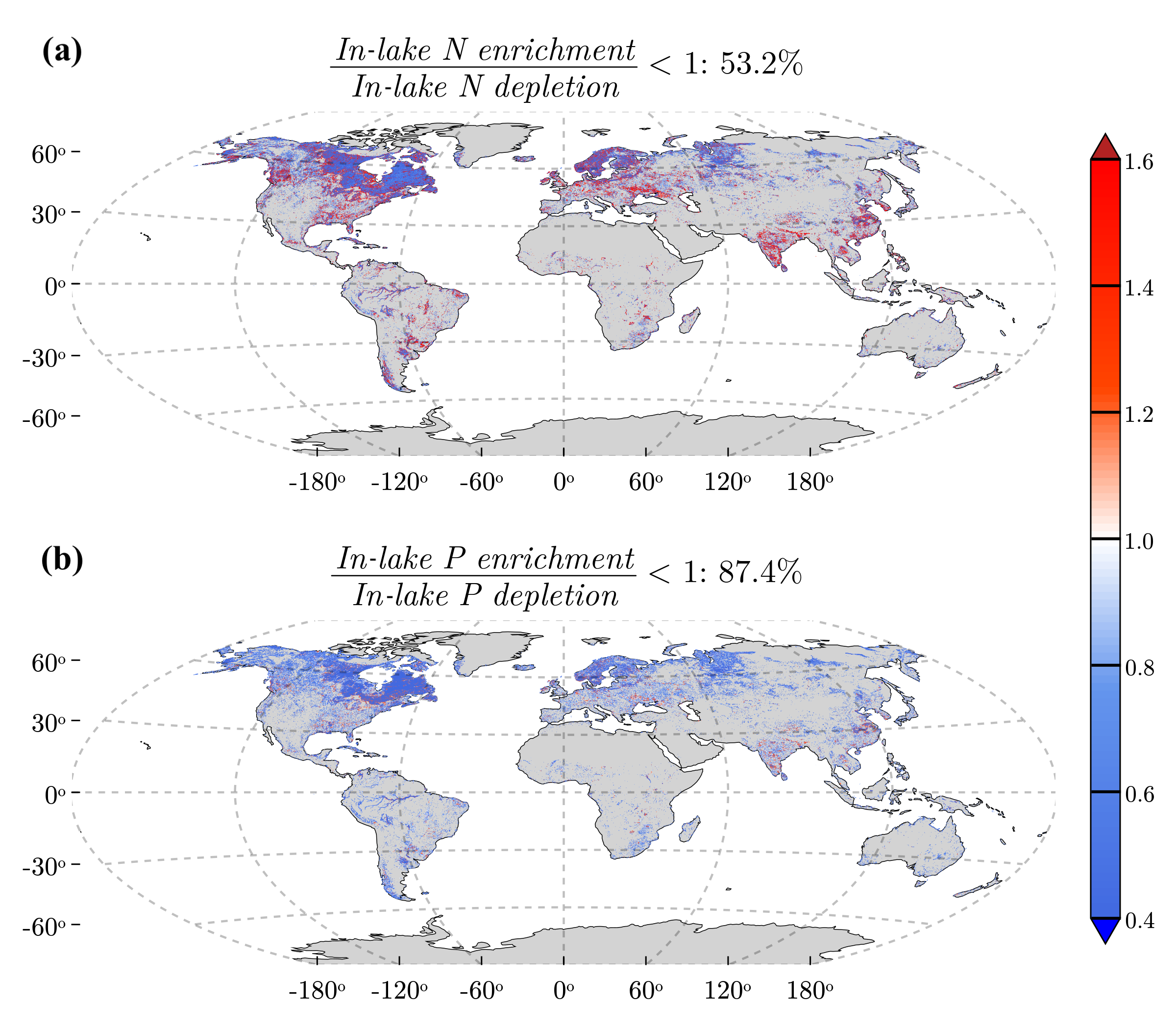Nutrient Retention in Global Lakes
Resolving Nitrogen and Phosphorus Cycles in Global Lakes
In my PhD work, I used statistical and numerical models to understand the driving factors of algal blooms in Lake Dianchi, one of the most eutrophic large shallow lakes in China. My work revealed the importance of internal nutrient cycling, relative to external inputs, during the restoration of Lake Dianchi and quantitively evaluated the contributions leading to eutrophication. I discovered that during algal blooms, the internal nutrient cycling, not external inputs, played the central role in the whole nutrient cycles in lakes, and contributed a lot to algal blooms which finally resulted in eutrophication.
As part of my postdoctoral work, I expanded my research on internal nutrient cycling from a single eutrophic lake to a meta-analysis, finding general patterns at the global scale. The study revealed that preferential phosphorus retention emerges in almost 90% of global lakes, which exacerbates the imbalance of the nutrient cycles and could result in biodiversity losses and algal blooms in lakes or downstream ecosystems. In the future, I plan to continue this study to provide more interpretable and reliable estimates of global nutrient retention in lakes. This research will require fundamental work to build a high-resolution database of lacustrine chlorophyll-a and external nutrient inputs globally.
